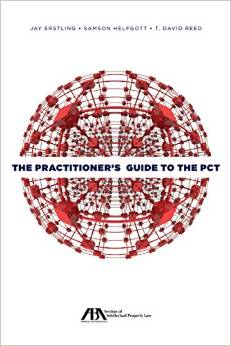More than three and a half years … that’s how long it took the USPTO to get around to acting upon a Power of Attorney that we filed in a patent case. Yes, the application is still pending after all this time. It happens.
Is it copending if you filed it on the day the parent issued?
[As noted in the comments below, the Court of Appeals for the Federal Circuit reversed. Same-day filers are safe.]
I’ve always assumed that if I manage to get my continuation or divisional application filed on the very day that the parent application issues, that’s good enough. The domestic benefit under 35 USC § 120 will work. Right?
Alert reader David Berry drew my attention to a February 11, 2015 ruling by Judge Richard G. Andrews in the U.S. District Court for the District of Delaware in a summary judgment motion in the case of Immersion Corp. v. HTC Corp. civil action 12-259. The ruling suggests that when the USPTO grants a patent, it does so at about 12:01 AM on the Tuesday, and that a would-be continuation or divisional application filed after 12:01 AM on that Tuesday would lack copendency under 35 USC § 120.
Continue reading “Is it copending if you filed it on the day the parent issued?”
What it costs to prepare a US provisional patent application?
A potential client will sometimes ask:
what’s your fee for filing a provisional patent application?
or sometimes the question will be:
what does it cost to apply for a provisional patent?
Or, by far the worst telephone call to receive in this general category is the potential client who cheerfully explains that he or she has prepared a draft provisional patent application, that the subject matter is “simple” and so the document should not require very long to review, and can I please just “touch it up” and file it with the USPTO? The caller makes clear that whatever bargain-basement price I would have charged to draft a provisional patent application, the caller expects me to quote a still smaller price to merely “touch up” the document.
When this happens, generally I politely refer the potential client elsewhere, but when pressed I will sometimes answer along these lines …
Continue reading “What it costs to prepare a US provisional patent application?”
Headed to Michigan!
This Sunday I will be traveling to Michigan to speak at the Spring Seminar of the Intellectual Property Law Section of the State Bar of Michigan. The Seminar will take place this coming Monday March 16.
Speaking at the NAPP Annual Meeting
I’ll be speaking at the 2015 annual meeting of the National Association of Patent Practitioners. The meeting is July 11-14 in Denver.
Speaking at AIPLA’s Patent Prosecution Boot Camp
I’ll be speaking this April at the AIPLA Patent Prosecution Boot Camp. This two-day seminar is tailored to new practitioners (those having less than two years of experience), or others who want to learn the basics of patent application preparation and prosecution. This seminar includes instructional sessions and hands-on claim drafting workshops.
Continue reading “Speaking at AIPLA’s Patent Prosecution Boot Camp”
Practitioner’s Guide to the PCT now available faster, cheaper
The Practitioner’s Guide to the Patent Cooperation Treaty is published by the AB A. For the longest time you could only get it directly from the ABA and it cost a lot of money and took forever to arrive. Now you can get it faster and cheaper.
A. For the longest time you could only get it directly from the ABA and it cost a lot of money and took forever to arrive. Now you can get it faster and cheaper.
Continue reading “Practitioner’s Guide to the PCT now available faster, cheaper”
This weekend and your filings at WIPO
This weekend is when Americans (well, most Americans) change their clocks for Daylight Saving Time. This makes a big difference if you are going to e-file something at WIPO or fax-file something at WIPO.
USPTO closed today (Thursday)
Yes it’s another snow day at the Patent Office.
What caption to use when responding to a patent Office Action?
Most of us, when we were learning how to prepare a response to a patent Office Action in the USPTO, were taught to load up the caption with every conceivable piece of information. When I was first in practice I was taught to provide not only the application number but also the art unit, the Examiner’s name, the filing date, and the title of the invention. Some years later the USPTO introduced the “confirmation number” and this, too, went into the caption. Now I skip all of this and I use the application number and nothing else in the caption. Why?
Continue reading “What caption to use when responding to a patent Office Action?”
